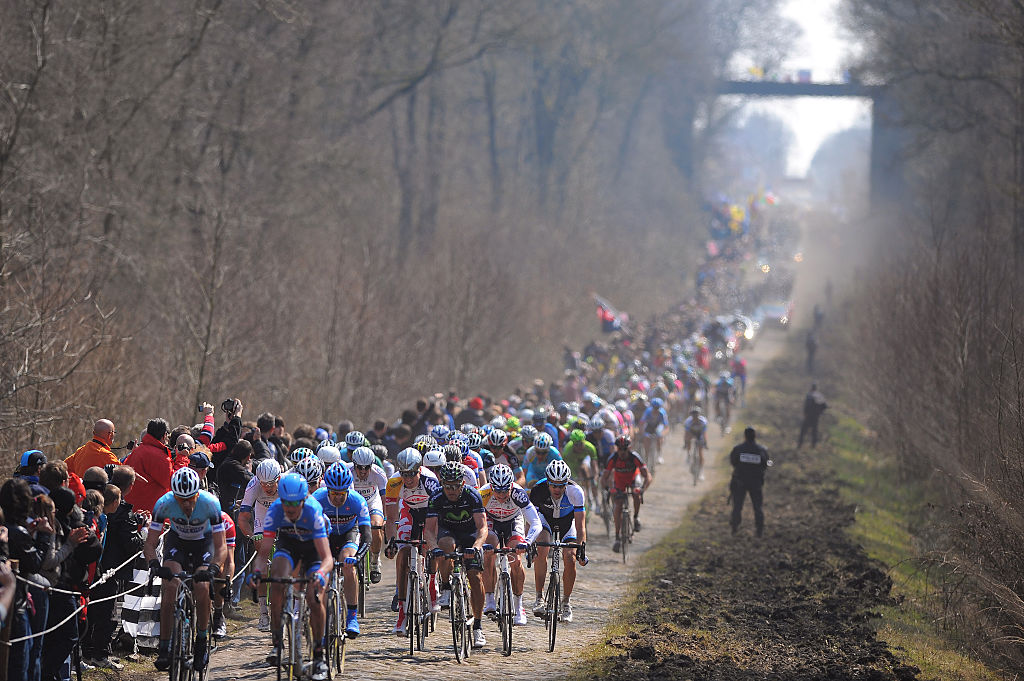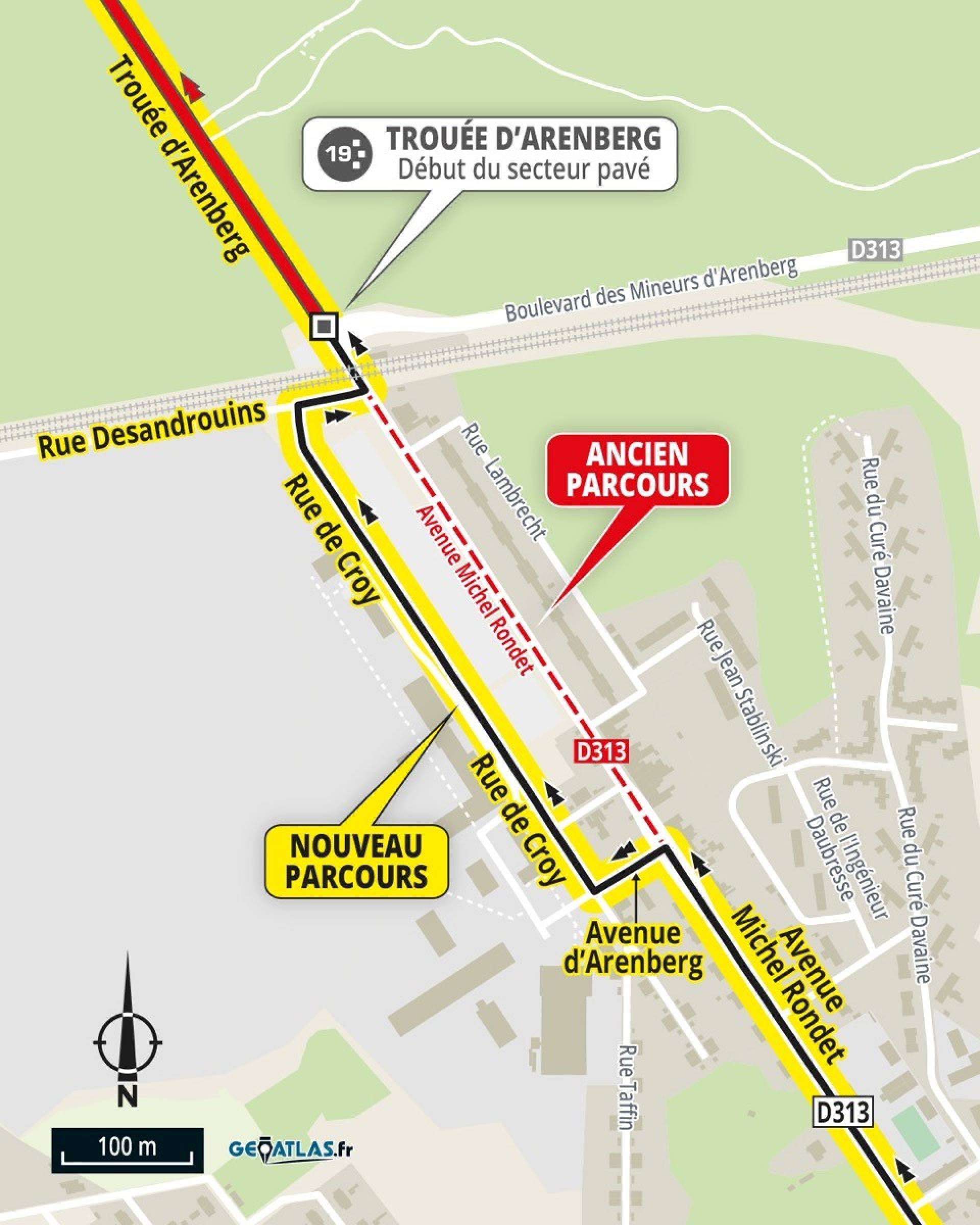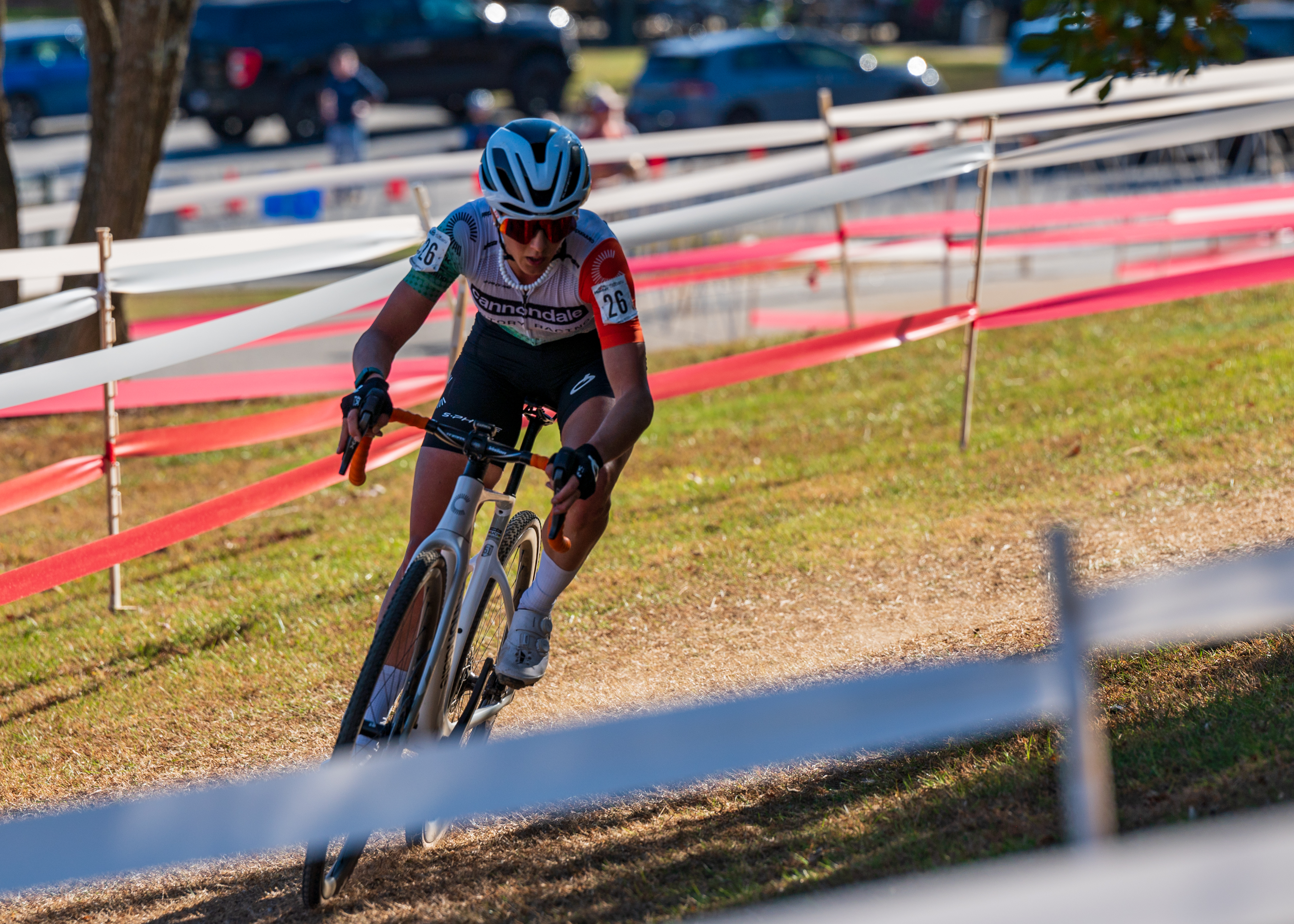What is the Trouée d'Arenberg? Paris-Roubaix cobbles at their most iconic in Arenberg Forest
The most interesting stretch of flat road in all of pro cycling

The Trouée d'Arenberg is infamous for being the first five-star cobbled sector in Paris-Roubaix. The path is technically called the Drève des Boules d'Hérin, and the 2,300 metres of rough cobblestones are some of the worst in all of professional cycling.
The road was laid down in the late 18th century and has subsided since then due to mine workings beneath the forest. Jean Stablinski is credited with suggesting the inclusion of the sector in Paris-Roubaix and the Trouée d'Arenberg was first used in the 1968 edition.
Since then, it has become a fixture of the race and prime viewing for spectators, with tall trees lining the sector to bring visual drama along with the race excitement. Coming with around 100km to go, it is typically where the first decisive splits of the season's biggest cobbled classic are formed.
Length: 2300 metres
Difficulty rating: 5 stars
First used in Paris-Roubaix: 1968
Location: Wallers, Département Nord in France
Trouée d’Arenberg Strava segment
Positioning is critical as the peloton comes blasting off the tarmac through a narrowing and hurtle across the cobblestones on a false flat downhill and chaos invariably ensues. The sharp, poorly laid stones are usually slick with dampness even when the race is dry, and the misaligned pavé often cause punctures or broken wheels. Crashes are inevitable.
As the sector's popularity grew with fans, the crowds became problematic as they filled the road and only moved back at the last second as the riders approached. Footpaths were installed on either side of the cobbles to keep the fans off the course, but soon riders followed as they sought to avoid tackling the pavé.
In 1998, Johan Museeuw was caught up in a massive crash in the Arenberg sector and suffered a broken kneecap. Despite the danger of grievous injury, the sector was only left out of the race in 2005 when a collapse in the tunnels beneath damaged the road.
The section was almost left out of Paris-Roubaix in 2012 because moss had grown over it and made it unsafe. The moss was cleaned off and the race proceeded with the historic route.
The latest race content, interviews, features, reviews and expert buying guides, direct to your inbox!
While later sectors at the Carrefour de l'Arbre and Mons-en-Pévèle have proven to be more frequently decisive in the outcome of Paris-Roubaix, the Trouée d'Arenberg is by far the most famous. And most dangerous.
In 2019, Les Amis des Paris-Roubaix took the unprecedented step to put mortar between the cobbles in the Arenberg sector to stop grass from growing between them and making the pavé extremely slippery.
In the build-up to the 2024 edition of Paris-Roubaix, race organisers ASO agreed with a request made by the riders for the inclusion of a chicane before the sector's entry in a bid to slow down the pace and reduce the likelihood of crashes.
The course change, which involved a loop of a traffic island, was only announced days before the race and provoked outrage from both riders and fans but it did ultimately prove successful. Instead of riding head-on into the sector at speeds of 60km/h, riders turned onto the sector much slower, resulting in far fewer crashes.
For 2025, a "small detour" will be used instead of the chicane, which includes four right-angle turns in the 600m prior to the sector.
"The approach should be more fluid than with last year's hairpin. Thanks to the work carried out by the Porte du Hainaut community of communes, the route that we were unable to use in 2024 is now fully passable, and has just recently been asphalted over a small section that needed it," explained race director Thierry Gouvenou.


Laura Weislo has been with Cyclingnews since 2006 after making a switch from a career in science. As Managing Editor, she coordinates coverage for North American events and global news. As former elite-level road racer who dabbled in cyclo-cross and track, Laura has a passion for all three disciplines. When not working she likes to go camping and explore lesser traveled roads, paths and gravel tracks. Laura specialises in covering doping, anti-doping, UCI governance and performing data analysis.
You must confirm your public display name before commenting
Please logout and then login again, you will then be prompted to enter your display name.
